How to Clean Lamps: Extra Cleaning Tips for Tiffany and Lava Lamp
Lamps are an essential part of any home, providing both light and style. However, lamps can also accumulate dust and dirt, which can make them look dull and dingy. Regular cleaning is important for keeping your lamps looking their best, but it can be tricky to know how to clean different types of lamps.
This article will discuss how to clean your lamps and provide extra cleaning tips for Tiffany and lava lamps.

Materials Needed to Clean Lamps
So, before going to the cleaning process you need some essential elements for cleaning your lamps. Here are the some of basic elements:
- Microfiber cloth
- Soft-bristled brush
- Soapy water (mild dish soap and warm water)
- White vinegar (for glass lamps)
- Baking soda (for fabric lampshades)
- Compressed air (optional)
How to Clean Lamps Properly
Cleaning lamps regularly can keep them looking their best and extend their lifespan. Here are the general steps on how to clean different types of lamps:
Cleaning Tips for Table Lamps
Table lamps are not only stylish additions to your home décor but also provide a warm and inviting ambiance. However, over time, dust and dirt can accumulate on the lamp, making it look dull and dingy. Regular cleaning is essential to maintain the beauty and longevity of your table lamp.
Here’s a step-by-step guide to cleaning your table lamp:
- Unplug the lamp and remove the shade.
- Dust the lamp base with a soft, dry cloth.
- Wipe the shade with a damp microfiber cloth.
- For stubborn stains, use a solution of mild dish soap and water.
- Rinse the shade with clean water and dry it with a soft cloth.
- Reattach the shade and plug the lamp back in.
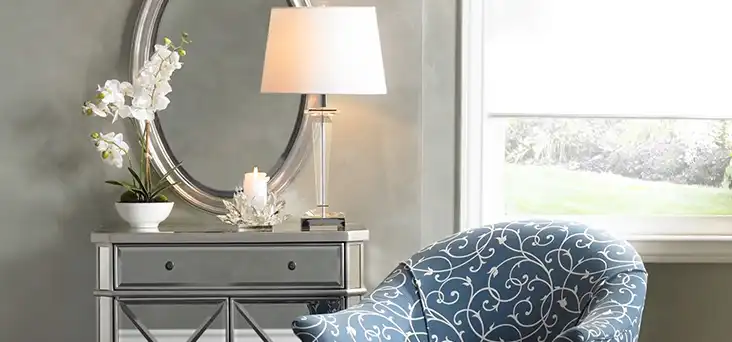
Cleaning Tips for Floor Lamps
To effectively clean floor lamps, start by turning off and unplugging the lamp. Remove the lamp shade and dust the lamp base using a soft, dry cloth. For the shade, use a damp microfiber cloth to wipe away dust and dirt, and for persistent stains, employ a solution of mild dish soap and water. Afterward, rinse the shade with clean water and dry it with a soft cloth. Finally, reattach the shade, plug the lamp back in, and enjoy a refreshed and clean lighting fixture.

Cleaning Fabric Lampshades
Here are some tips for cleaning fabric lampshades –
- Turn off and unplug the lamp.
- Remove the lampshade from the lamp.
- Dust the lampshade with a microfiber cloth or soft-bristled brush to remove loose dirt and dust.
- For stubborn stains, dip a clean, soft-bristled brush in soapy water and gently scrub the stain. Rinse the brush with clean water and repeat until the stain is gone.
- For delicate fabrics, try using a solution of one tablespoon of baking soda and a dash of warm water. Apply the paste to the stain and let it sit for 15 minutes. Rinse the paste with clean water and air dry the lampshade.
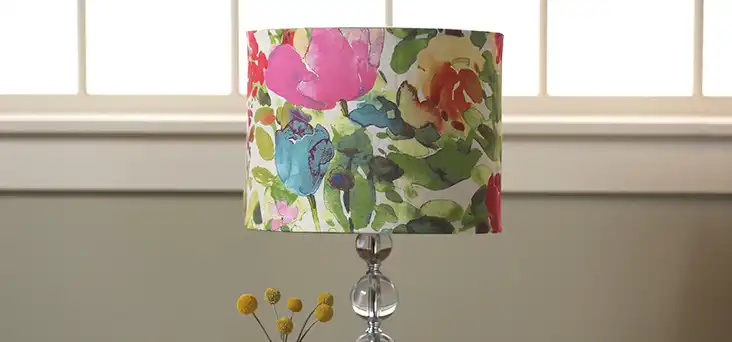
Cleaning Glass Lampshades
Maintaining the pristine shine of your glass lampshades is essential for preserving their beauty and ensuring they radiate a warm, inviting glow. Follow these simple steps to effectively clean your glass lampshades and keep them sparkling:
Step 1: Power Off and Disconnect
Safety first! Before embarking on the cleaning process, ensure your safety by turning off the lamp and unplugging it from the power source.
Step 2: Remove the Lampshade
Gently detach the lampshade from the lamp base to gain access to the glass surface for thorough cleaning.
Step 3: Initial Dust Removal
Using a clean, damp microfiber cloth, gently wipe the lampshade to remove any loose dust or fingerprints. This initial step helps prevent the spread of dirt during the subsequent cleaning process.
Step 4: Tackle Stubborn Stains
For stubborn stains or smudges, prepare a solution of equal parts white vinegar and water. Dip a clean microfiber cloth into the solution and apply it to the stain. Allow the solution to sit on the stain for a few minutes to break down the residue.
Step 5: Polish and Rinse
Rinse the microfiber cloth with clean water to remove any vinegar residue. Gently buff the stain with the damp cloth until it has completely disappeared.
Step 6: Final Touches
Once the stain is removed, wipe the entire lampshade with a clean, damp microfiber cloth to remove any remaining cleaning solution. Allow the lampshade to air dry completely before reattaching it to the lamp base.

Cleaning Brass or Metal Lamps
When cleaning brass or metal lamps, follow these simple steps for optimal results.
Step 1: Embrace the Darkness and Disconnect: Before embarking on your cleaning quest, ensure safety by switching off the lamp and severing its connection to the power source.
Step 2: Softly Subdue Dust’s Reign: Dip a gentle cloth into a bath of mild soap and water. With a gentle touch, glide the cloth over the lamp’s surface, bidding farewell to any dust or grime that dares to linger.
Step 3: Vanquish Tarnish, Restore Shine: For tarnished brass or metal, summon a commercial polish, your ally against the relentless march of time. Apply a modest amount of the polish to a clean cloth, and with a circular motion, banish the tarnish, revealing the lamp’s radiant splendor.
Step 4: A Final Touch of Perfection: To conclude your cleaning crusade, wipe the lamp with a clean, damp cloth, bidding farewell to any lingering traces of polish. Allow the lamp to bask in the air’s embrace until it is fully dry, before reuniting it with the power source.
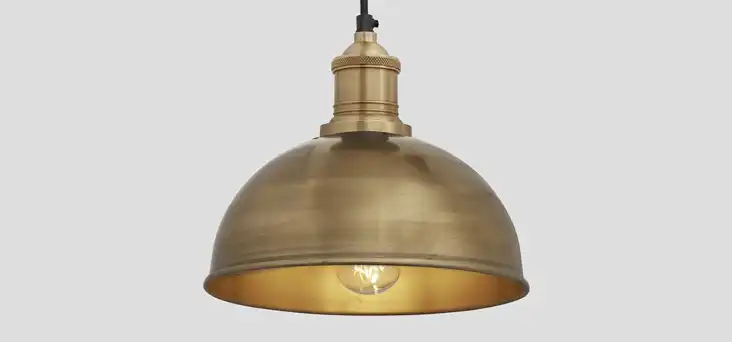
Additional Tips
- Always test any cleaning solution in an inconspicuous area of the lampshade or lamp base before applying it to the entire surface.
- Avoid using harsh chemicals or abrasives, as these can damage the lampshade or lamp base.
- If the lampshade is very dirty, you may want to take it to a professional cleaner.
- Regular dusting and cleaning will help to keep your lamps looking their best and prevent the buildup of dirt and grime.
Extra Cleaning Tips for Tiffany Lamps
The most important thing you should know before cleaning Tiffany lamps is that they are made of glass, ceramics, and silver or silver, being very soft metals. As such, even though these objects are beautiful and expensive, they still need proper care if we want them to last longer than just one or two years. Follow the steps below for a proper cleaning process of the lamp.
1. Check For Any Cracks
First of all, before cleaning the lamp parts, you should check them for any cracks. The lamps can be cleaned with water and soap or by wiping them off with a soft cloth. Suppose there are any cracks in the glass or ceramic parts of your Tiffany lamp. In that case, it will be better to replace it with another one instead of cleaning these materials because they can break if they are not handled carefully.
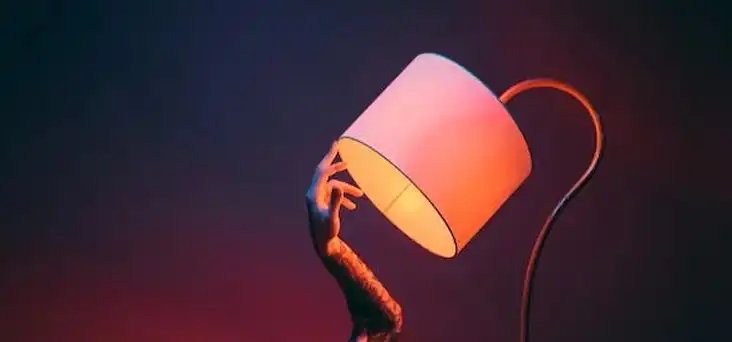
2. Use A Mixture Of White Vinegar And Water
To clean your Tiffany lamp, the best way is to use white vinegar and water mixed in a ratio of 1 to 1. This will not only help remove any dirt but also clean the glass. You can use a soft cloth or cotton to rub it away from the base of your lamp, then wipe down both sides with a damp cloth until all traces of dirt are gone. Then, clean the glass or ceramics with a cotton cloth.
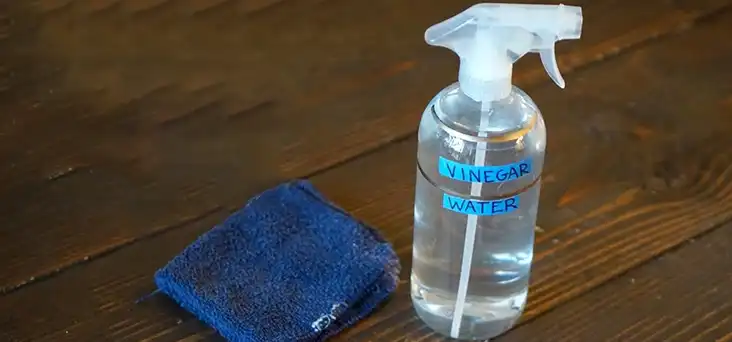
3. Clean Remaining Dust
Once you’ve cleaned the glass or ceramic lamp, use a soft cotton cloth or microfiber cloth to wipe away any remaining dust. You can also use a gentle detergent on the cloth and rinse it in warm water before drying it with a dry fluffy towel.
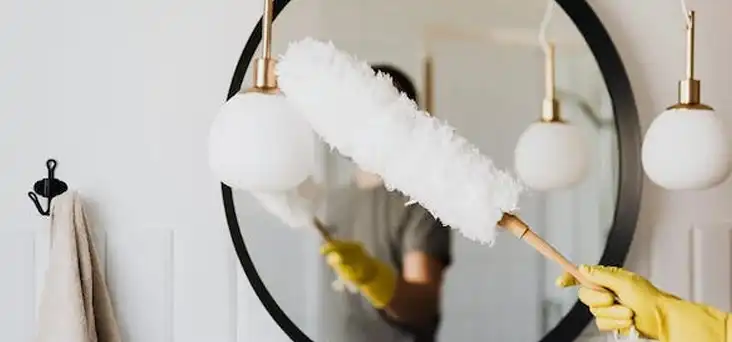
How To Clean Multiple Tiffany Lamps?
When you want to clean more than one Tiffany lamp at once (or if you’re trying to remove grease stains), several ways can be done:
1. Clean Using A Vacuum Cleaner
A vacuum cleaner will remove the dust by sucking it in and thus preventing the chance of breaking the glass.
- First, remember that you should use a vacuum cleaner to suck up dust from your Tiffany lamp.
- Use a soft brush attachment and wipe down any dust particles that may have settled on its surface.
- Wipe the remaining dust with a wet cloth and swab them away with alcohol.
- Do not use sharp objects such as metal sponges or brooms when cleaning your Tiffany lamp. Because doing so can damage its finish and cause scratching of other parts of the fixture. In that case, ensure you don’t accidentally scratch anything while cleaning.
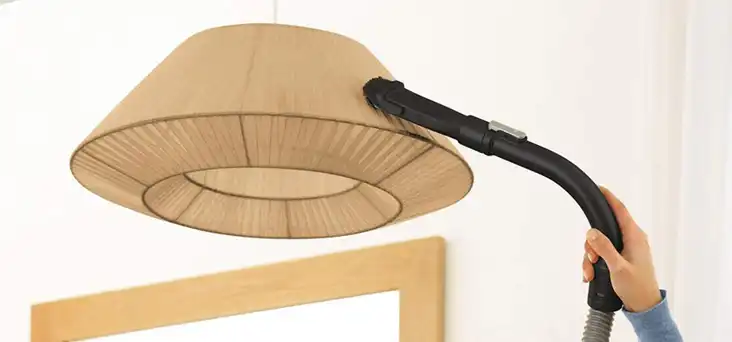
2. Cleaning The Lamp Parts
- The base can be cleaned with a soft terry cloth and warm water. Be careful not to get it too wet, or you may end up damaging your Tiffany lamp.
- The cord should also be wiped down with a damp cloth as needed.
- The lampshade frame will likely need more attention because of how delicate it is. Make sure not to scratch at all to ruin this piece of art.
- If there’s any debris stuck on either of these pieces, use a toothbrush to clean them before reassembling them into their original positions within the frame.
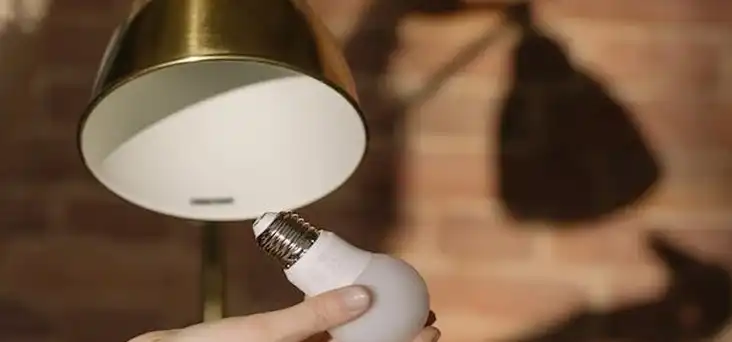
How Can You Tell If A Tiffany Lamp Is Real Or Not?
Tiffany’s lamps were originally designed to sit atop liquor cabinets. Therefore, the lamp did not have a focus. You can identify a Tiffany lamp by its focal point, whether it is centered on the front of the globe or behind it. For an authentic Tiffany lamp to be truly authentic, all three arms (front, back, and ends) must be present.
Typically, Tiffany lamps contain several decorative elements representing symbols or other details of the styles represented by the lamps. Most notable are the leaf or vine-shaped ornaments that feature in many designs. Many of these ornaments and details can be purchased separately and used on other objects to accent and customize them. Others, such as the metalwork within the base, are only available in specially produced Tiffany base metal furniture.
Extra Cleaning Tips for Lava Lamps
A British guy named Edward Craven-Walker created the lava lamp in 1963, found by a couple of American businesspeople in 1965. The rest would be destiny, at least if you lived in America during the 1960s. Lava lamps, no matter how well-kept, can get hazy. So let’s see how we could undo that.

How Do LAVA Lamps Work?
The LAVA lamp’s theory is the same now as when Edward Craven Walker designed it in the 1960s. The lumps that provide the Lava lamp its trademark appearance are comprised of wax that has been melted by the bulb in the lamp’s bottom. As the wax warms, it becomes lighter than the liquid it is hung, causing it to float to the globe’s surface.
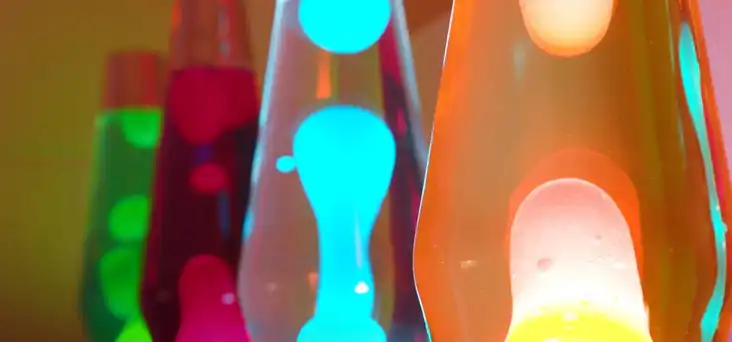
As it moves away from the bulb, the wax cools and then becomes heavier than the water, forcing it to dip back toward it. This generates a heating and cooling cycle, which gives the Lava lamp its trademark glow and flow. It’s a basic but awe-inspiring concept that has endured as one of the greatest unusual home furniture ever.
How to Clean a Lava Lamp: Step-by-Step
You can clear out that cloudy water, whether fixing a flea market discovery or restoring a valued personal treasure. But, before you begin, make certain that the lava lamp is cool and that all of the wax has dropped to the bottom.
Things You Will Need:
- Dishtowel
- Water
- Paper towels
- Dish soap
- Epsom salts
- Glass
- Bowl
- Straw or pipette
Steps:
- Disconnect the lava lamp and detach the top, if required, with vise grips. Place a wrapped dish towel between the vise grips and the lid to avoid scratching or damaging the glass. Unscrew the cover by turning it counterclockwise.
- Remove all of the liquid from the lava lamp. Do this gently to avoid disturbing the wax inside of the lamp.
- Pour cold water into the lava lamp gently, allowing it to flow down the side rather than pouring immediately over the cool wax. You should add two to four inches of water to the lava lamp.
- To clean the interior of the glass, gently swirl the lava lamp with cold water. Pour it out slowly. Rep 3 to 4 times more until the glass is spotless.
- Refill the liquid of the lava lamp up to the point where the neck begins to narrow. Place the lamp at an incline beneath the faucet, allowing the water to run down both sides without disturbing the wax.
- Wipe clean the lamps outside to verify there are no moist spots. Connect the light. Switch on the lava light. Do not touch or move it until the wax has completely melted. At this stage, it’s unlikely to come up the way you’re used to seeing it.
- Fill your lava lamp with two drops of liquid detergent.
- In one cup of warm water, dissolve four tablespoons of Epsom salts. The measuring does not need to be precise. Water and stir till all the Epsom salts have dissolved. Continue to add Epsom salts to the solution until it no longer dissolves. If your glass doesn’t accept more than 5 or 6 teaspoons of Epsom salts, place it in a dish of hot water. The water should be as saturated with Epsom salts as feasible.
- Fill a straw, pipette, or eyedropper halfway with salt water. Carefully pour it into the lava lamp one or two drips at a time.
- Replace the lava lamp’s cover once the wax begins to break off into tiny pieces, like it did while it was new, or is near to doing so.
Bonus Tips
The procedure of adding seawater to the lava lamp might take hours since you want to get the correct balance of the saltiness of the water and the firmness of the wax. If you add things too quickly, the wax will melt; if you add too little, the wax will not split apart and form those wonderful, floating orbs.
Dish soap functions as a surfactant, assisting the wax in keeping its bubble formations. To make your lava lamp more festive, add 2 to 3 drops of dye coloring to the fresh water.
Warning
Never disassemble a lava lamp without first disconnecting it.
Best way to care for an LAVA lamp
Here are a few easy guidelines to follow to guarantee that your LAVA light continues to provide you with as many hours of fun as possible:
- Do not attempt to unscrew or remove the globe’s cap. Removing the seal will damage the lamp and void the warranty.
- While your Lava lamp is shaken or heated, do not move, or drop it. This might result in long-term harm, such as the lamp getting clouded or the lava splitting apart. If this occurs, switch off the light instantly and let it alone for 24 hours before turning it back on and running normally.
- Place the lamp away from direct sunlight to avoid fading the colors.
- Avoid storing or operating your LAVA® light in severe cold or heat, since this will impair its effectiveness.
How to rejuvenate a lava lamp?
Turn on the light for approximately an hour, then switch it off and allow it to cool. This gives the wax enough time to melt slightly. The goal is to soften it so that when it settles, all of the loose small particles floating about in the water will fuse back together into one huge blob.
What is the fluid in a lava lamp?
The swirling globs we recall are mostly formed of paraffin wax, with substances such as carbon tetrachloride applied to boost density. The wax may float or mineral oil, with pigments and glitter added for fun.
How do I ruin a lava lamp?
This normally happens when the lamp becomes hot and needs to be turned off (never keep your lava lamp on for more than 10 hours). If the lava is dissolving but lying flat, the halogen lightbulb should be examined. The lightbulb might be burned out and in need of replacement.
Preventing Dust and Dirt Buildup
Here are some tips for preventing dust and dirt buildup on your lamps:
- Dust your lamps regularly with a soft, dry cloth.
- Keep your lamps away from dust sources, such as vents and windows.
- Use a humidifier to keep the air moist, which will help to prevent dust from settling on your lamps.
How Do You Clean A Glass Slag Lamp?
Cleaning glass slag lamps is a very similar process to cleaning other glassware. The only difference is that the lamp has a black coating on its exterior, which makes it more difficult to clean.
If you have a lamp that has a black coating on the exterior, use a soft cloth with mild soap and warm water. Use an old toothbrush if you need to go into the cracks and crevices of your lamp.
You should not use any harsh chemicals or abrasive cleaners on your glass slag lamp because they can scratch or damage it over time.
Are Tiffany Lights Worth Anything?
Well, that depends on their value and condition. But in general, Tiffany lighting has become very expensive. The process of melting the materials and the light quality make the price of antique Tiffany lamps extremely high.
How To Clean Stained Glass Shades?
You can follow the process below to clean stained glass shades.
1. Use a mild soap and water solution to remove dirt, dust, and grime from the glass.
2. Clean with a soft cloth to remove any remaining dirt or debris.
3. Rinse thoroughly under cold running water for about a minute.
4. Apply a small amount of furniture polish or glass cleaner to a soft rag, then wipe down the entire surface of the shade.
5. Allow the cleaner to dry completely before replacing it with your lamp.
The Sum Up
Maintaining clean lamps is essential for both aesthetics and functionality in your home. This article has provided comprehensive cleaning tips for various types of lamps, with a special focus on Tiffany and lava lamps. By using common household items and following specific instructions, you can ensure your lamps stay pristine. Additionally, preventive measures such as regular dusting and strategic placement contribute to the longevity of your lamps. Remember, a little care goes a long way in keeping your living spaces well-lit and stylish.






